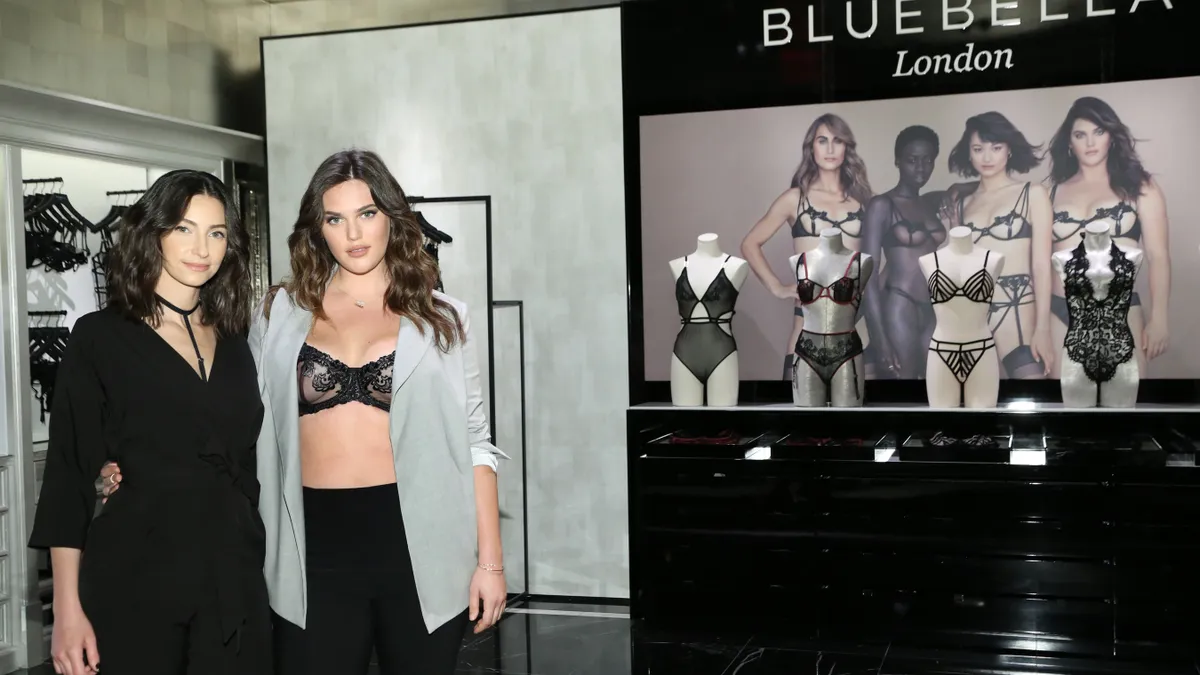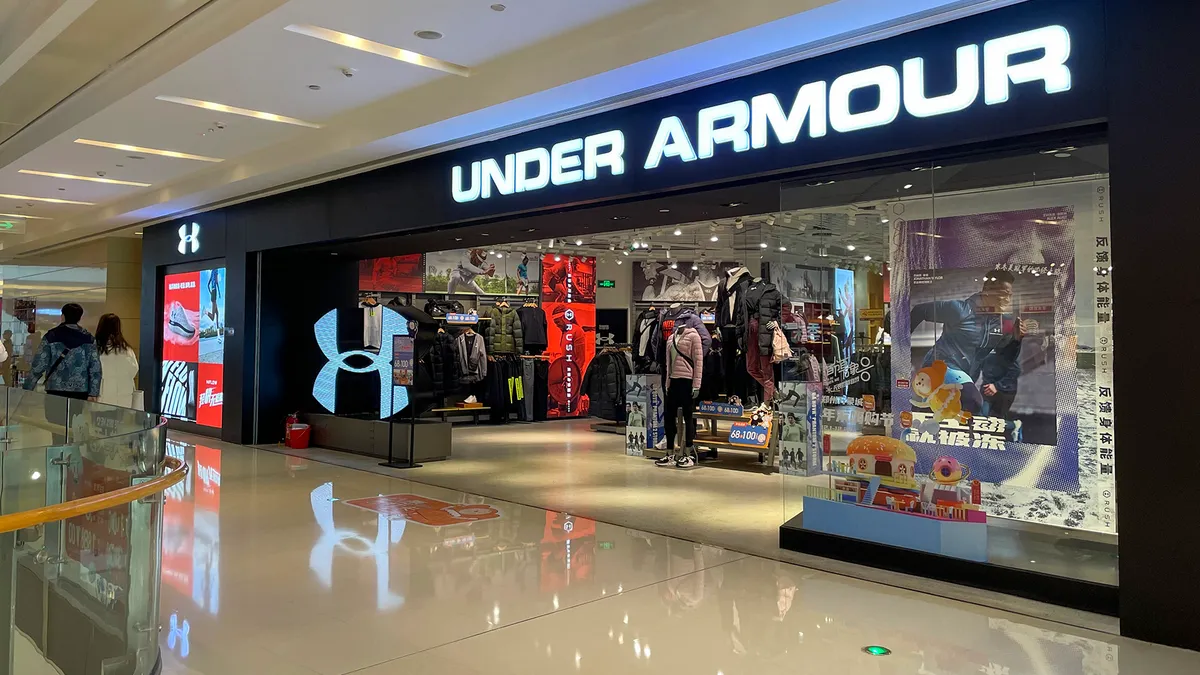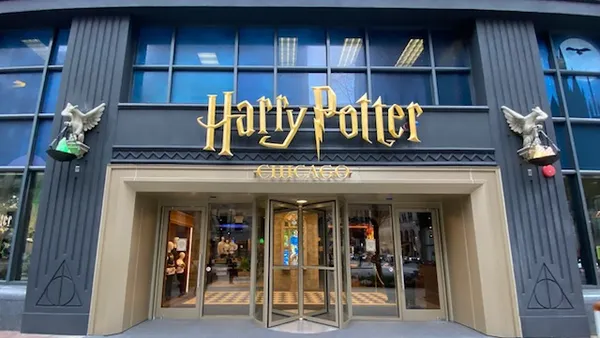Victoria’s Secret on Thursday announced a series of departures from its corporate operations that signaled broad changes but also sparked uncertainty about its strategy going forward.
After confirming that longtime executive April Holt, the company’s chief of stores, had resigned, the brand later in the day said that some 50 employees in a range of positions were also leaving. Becky Kritek-Behringer, SVP of store operations, is taking over from Holt in the interim, according to a company spokesperson.
Those exits, which the company told Retail Dive were unrelated to Holt’s resignation, represent less than 15% of its workforce and were from corporate operations at both its Columbus, Ohio, headquarters and its New York City office, according to the spokesperson.
Some turnover in executive ranks is expected whenever there's a new top executive, and John Mehas, formerly the president at Tory Burch, arrived to lead the brand only early this year. But according to at least two sources familiar with L Brands typical operating mode, the spate of departures underway is unusual for a company that tends to reserve such moves for closer to the end of its fiscal year, and comes at a time when retailers are laser-focused on the all-important holiday season. Without much explanation from the brand, the development is leaving analysts with many questions.
"This is a large shakeup which has been executed at an unusual time of year," GlobalData Retail Managing Director Neil Saunders told Retail Dive in an email. "However, it is hard to determine whether this is positive or negative for the brand as the cuts have not been executed as part of a wider strategy that has been discussed with the market."
The workforce cuts add to what has already been significant turnover at Victoria’s Secret and parent L Brands, amid a sales slide at the lingerie brand and a recovery that analysts and activist investors have deemed too slow. Most prominently was the departure earlier this year of longtime marketing chief Ed Razek, who had done little to further the brand's evolution in controversial comments last year about transgender models and about a digitally native lingerie brand stealing some of its sales.
Indeed, the lag has left the lingerie giant to cede share to upstart e-retailers in the space, along with American Eagle’s Aerie. Those rivals have responded more quickly with merchandise and marketing demanded by shoppers, who want more comfortable, less sexualized styles and messaging more in keeping with the empowerment ethos of the #MeToo era.
After Razek's departure and the subsequent cancellation of the brand's infamous "angels" runway show, shareholders last heard from Mehas, L Brands founder Les Wexner and other L Brands executives at the company’s annual meeting in September.
At that time, Mehas, Wexner and newly arrived Pink brand chief Amy Hauk described a turnaround that squarely addressed the new market demands. Hauk in particular touted a theme of empowerment and embraced marketing that reflects "real bodies, real life experiences," including transgender shoppers and people with bodies of all types. And Wexner admitted that the brand had badly neglected the need for change. (That came after opening the event by distancing himself from disgraced financier and convicted sex offender Jeffrey Epstein, his former financial adviser, whose death in prison in August was ruled a suicide — a relationship that has only complicated Victoria’s Secret’s efforts to shake off its reputation for an outmoded attitude toward women.)
It's been a tough year. Activist investors, alarmed about the brand’s trajectory, have called for drastic change, and some analysts were inclined to find hope in the cuts revealed on Thursday.
"Any disruption is good at [Victoria’s Secret]," Jane Hali, CEO of investment research firm Jane Hali & Associates, told Retail Dive in an email. "It has to be better — now it's the status quo. The merchandise is even worse, if that can be believed. Look at our social media this week."
JHA still believes that $LB is not in tune with the consumer sentiment of “comfort” being the thread line of fashion today. “London-based Bluebella’s designs are now available at online and select stores Stateside.”#intimates #retail #JHA pic.twitter.com/ygWVyNAXaF
— Jane Hali & Associates (@JHaliAssoc) October 9, 2019
The firm on Twitter had maintained that the brand’s newly announced tie-up with U.K. lingerie brand Bluebella is another misstep in overhauling its merchandise because it fails to address demand for comfortable styles.
The extent of change at Victoria's Secret does remain somewhat muddy. At the shareholders meeting, Mehas seemed to strive for nuance, acknowledging the imperatives and opportunities brought on by the #MeToo movement, but signaling caution. "There's an opportunity to take a step back and reinvigorate the brand," he said. "We're essentially in agreement, [but] it's a fine line, and we're being thoughtful about what that looks like."
In fact, the Bluebella collaboration and an earlier one with Parisian lingerie label Livy both seem like attempts to stick with a sexualized message — albeit one re-forged through female empowerment, rather than dependence on the male gaze. That could be a particularly delicate maneuver considering the brand’s baggage. It’s not clear whether the housecleaning on Thursday reflects the reforms outlined by executives last month, something beyond even those, or more of an efficiency play.
"If the shakeup is an effort to put an end to the old thinking that has dogged the company for so long, then it is a good first step," Saunders said about Thursday's job cuts. "However, given the wide-ranging nature of the cuts – which have seemingly affected all departments and levels – this seems unlikely. After all, the issues with Victoria’s Secret have always been around brand and marketing, so that’s where you’d expect most changes to be concentrated. You would not remove key people from the real estate and store teams."
That could mean that the cuts "are a bid to streamline the brand and improve profitability," he also said.
"If this is the case, the move is not necessarily that smart as it is responding to the symptoms of the problems rather than the root cause," Saunders warned. "It raises the perennial question of whether Victoria’s Secret actually knows what it needs to do in order to restore the brand to health."
This week the company was hailed for enlisting more diverse models for Bluebella, an aspect of the campaign that isn’t mentioned in its press materials. Lee Peterson, executive vice president of thought leadership and marketing at WD Partners, (who worked with Wexner at The Limited years ago), called that diversity a good step. But he also said that much will depend on how forthright the brand is willing to be — something that he said has come up short so far. "I still think they’re going to be better," he said in an interview. "It’ll turn."
The bottom line for Saunders, and many others, is that "change is necessary at Victoria’s Secret," and now seems to be actually happening. "However, unless the personnel changes are a prelude to bigger and more substantive adjustments they will likely be in vain," he warned.























